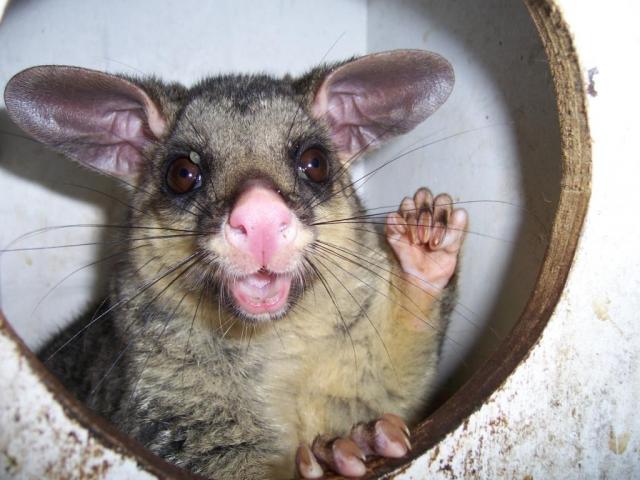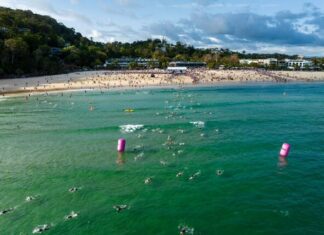Recognised leader in wildlife management Adrian Caneris took guests at Noosa Parks Association (NPA’s) first forum for the year last Friday on a journey to look at some of the good, the bad and the ugly Queensland wildlife and how humans interact with them.
“Some people find them ugly I look at them and say that’s marvellous,” Adrian said of micro-bats, one of several species he mentioned that polarise human opinions but have adapted to the human environment.
“Without tiny bats flying around our streets and backyards we would be locking our doors to stop the insects pouring into the room. They eat about 12 tons of mosquito in a night – how people calculate that I don’t know,” he joked.
“They perform a very important ecological service but most people don’t know they’re there and don’t know much about them at all.”
When it comes to brush-tail possums Adrian describes them as “winners” in the way they have adapted to the urban environment. “Go out to bushland areas you get 1-2 brush tail possums per hectare, go to inner Brisbane, you get 30-40 per hectare. Some people love them, some hate them.
“There are species that are quite common and doing well and other species that don’t do well in the urban development, don’t adapt to it. Possums are running around, eating everything, much of it not their native diet.”
Bush turkeys, once a rainforest fringe-dweller, is a common sight in Noosa, and a species also doing well in urban areas, though they cause havoc in some neighbourhoods when they rake up yards of mulch for their nests.
One species doing badly in the urban environment is one of our most iconic – the koala.
“More money and more time is spent on the koala than every other species put together,” Adrian said.
“We protect koala habitat. We know so much about them, yet we still can’t maintain them, they’re still decreasing. They’re the easiest thing to manage from a wildlife management perspective. You just plant gum trees – let them wander around.
“We are so good at killing them. We are so good at running them over, letting dogs run around at night, having a swimming pool without a rope they can climb out.”
Another species struggling to survive is the Glossy Black Cockatoo.
“These are a special species. They only raise one egg every second year. It’s a rare species. If you have things go wrong, the species can disappear quite quickly,” Adrian said.
“No where else in the world do Glossy Black Cockatoos share an environment with people. Other places get them occasionally, no where else, in the consistency in numbers than here.”
Adrian spoke of the importance of investment by governments in the management of feral animals, of managing activities such as horse riding and trail bike riding in protected areas and having infrastructure such as walkways over main roads for wildlife to cross safely.
“This part of the world is better than anywhere else, probably in Australia, for restricting development,” he said.
“We live in a wonderful part of the world. Tourists love coming here. You can only protect what you love. People love the natural area but don’t necessarily protect it.
“We are lucky in Australia to have our wildlife. Most people walk around, they see a galah and don’t even notice it. You get people from overseas see a flock of galahs and they think it’s so special.”
Adrian has been involved in ecological monitoring, research, management, consulting, tertiary teaching and community-based studies of terrestrial ecology for over 35 years. His expertise is often called upon for matters before the Queensland Planning and Environment or Land Courts.
For more information on Friday forums visit noosaparks.org.au








